#area di barbara bologna
Photo

Quantum materials: Electron spin measured for the first time An international research team has succeeded for the first time in measuring the electron spin in matter—i.e., the curvature of space in which electrons live and move—within "kagome materials," a new class of quantum materials. The results obtained—published in Nature Physics—could revolutionize the way quantum materials are studied in the future, opening the door to new developments in quantum technologies, with possible applications in a variety of technological fields, from renewable energy to biomedicine, from electronics to quantum computers. Success was achieved by an international collaboration of scientists, in which Domenico Di Sante, professor at the Department of Physics and Astronomy "Augusto Righi," participated for the University of Bologna as part of his Marie Curie BITMAP research project. He was joined by colleagues from CNR-IOM Trieste, Ca' Foscari University of Venice, University of Milan, University of Würzburg (Germany), University of St. Andrews (UK), Boston College and University of Santa Barbara (U.S.). Through advanced experimental techniques, using light generated by a particle accelerator, the Synchrotron, and thanks to modern techniques for modeling the behavior of matter, the scholars were able to measure electron spin for the first time, related to the concept of topology. "If we take two objects such as a football and a doughnut, we notice that their specific shapes determine different topological properties, for example because the doughnut has a hole, while the football does not," Domenico Di Sante explains. "Similarly, the behavior of electrons in materials is influenced by certain quantum properties that determine their spinning in the matter in which they are found, similar to how the trajectory of light in the universe is modified by the presence of stars, black holes, dark matter, and dark energy, which bend time and space." Although this characteristic of electrons has been known for many years, no one had until now been able to measure this "topological spin" directly. To achieve this, the researchers exploited a particular effect known as "circular dichroism": a special experimental technique that can only be used with a synchrotron source, which exploits the ability of materials to absorb light differently depending on their polarization. Scholars have especially focused on "kagome materials," a class of quantum materials that owe their name to their resemblance to the weave of interwoven bamboo threads that make up a traditional Japanese basket (called, indeed, "kagome"). These materials are revolutionizing quantum physics, and the results obtained could help us learn more about their special magnetic, topological, and superconducting properties. "These important results were possible thanks to a strong synergy between experimental practice and theoretical analysis," adds Di Sante. "The team's theoretical researchers employed sophisticated quantum simulations, only possible with the use of powerful supercomputers, and in this way guided their experimental colleagues to the specific area of the material where the circular dichroism effect could be measured." IMAGE....1 / 1Three perspectives of the surface on which the electrons move. On the left, the experimental result, in the center and on the right the theoretical modeling. The red and blue colors represent a measure of the speed of the electrons. Both theory and experiment reflect the symmetry of the crystal, very similar to the texture of traditional Japanese "kagome" baskets. Credit: University of Bologna.
0 notes
Photo

- nothing's fine, i'm torn by for-your-eyesonly featuring a hypoallergenic comforter
#polyvore#fashion#style#Area Di Barbara Bologna#Miss Selfridge#Johnstons#Brandy Melville#Topshop#Forever 21#Chanel#DOWNLITE#Christy#OKA#Polaroid#clothing#snowinseptember5years
12 notes
·
View notes
Photo

Area di Barbara Bologna / 248 / 24thofaugust
38 notes
·
View notes
Photo

Express Yourself! by polyvore-editorial featuring a leather crossbody tote
#polyvore#Area Di Barbara Bologna#Damsel in a Dress#Gucci#Christian Louboutin#Proenza Schouler#fashion#style#clothing
8 notes
·
View notes
Photo

Untitled #953 by lucyshenton featuring a ripped shirt ❤ liked on Polyvore
Area Di Barbara Bologna ripped shirt, $305 / R13 distressed jeans / Converse black shoes, $85 / Chanel belt bag / Red earrings, $2.76 / Band hat / Moschino circle sunglasses
1 note
·
View note
Photo
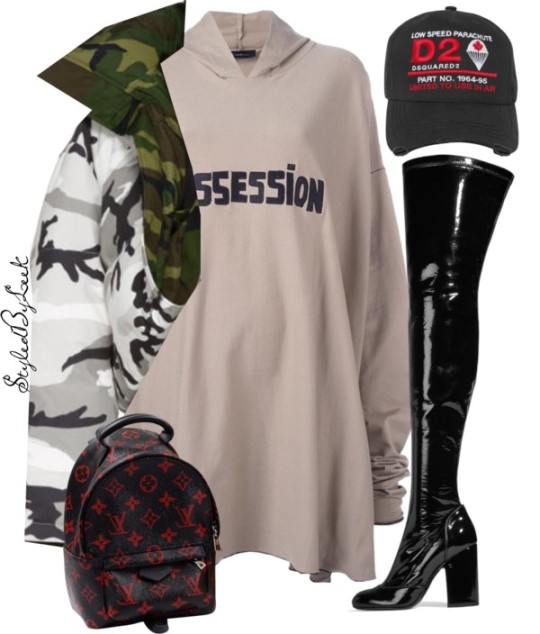
Untitled #1074 by stylebywho featuring black thigh-high boots ❤ liked on Polyvore
Area Di Barbara Bologna hooded sweatshirt, $355 / Vetements parka coat / Laurence Dacade black thigh-high boots, $635 / Louis Vuitton mini bag, $2,360 / Dsquared2 mens baseball cap, $130
#polyvore#fashion#style#Area Di Barbara Bologna#Vetements#Laurence Dacade#Louis Vuitton#Dsquared2#clothing
1 note
·
View note
Photo
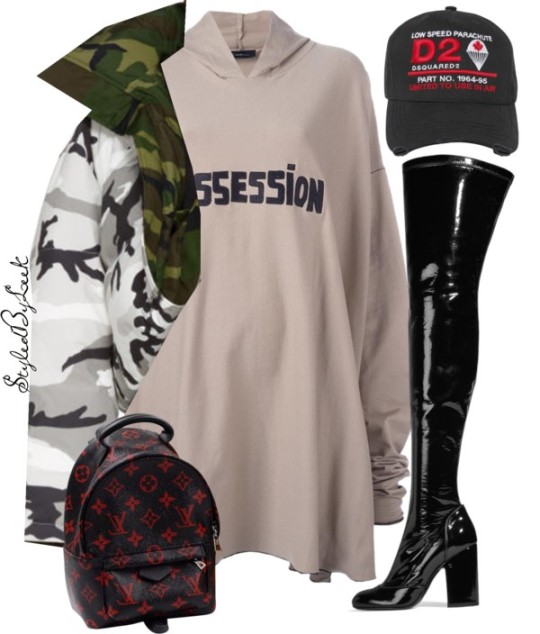
Untitled #1074 by stylebywho featuring mens hats
Area Di Barbara Bologna oversized top, $355 / Vetements leather sleeve coat / Laurence Dacade black boots, $635 / Louis Vuitton backpack bag, $2,360 / Dsquared2 mens hat, $130
#polyvore#fashion#style#Area Di Barbara Bologna#Vetements#Laurence Dacade#Louis Vuitton#Dsquared2#clothing
1 note
·
View note
Photo

Grey Layers by skad183 featuring a drawstring trousers ❤ liked on Polyvore
Proenza Schouler grey crew neck sweater, 520 CAD / Chloé long grey jacket, 2,120 CAD / Area Di Barbara Bologna drawstring trousers / Gucci Princetown Metallic Leather Slipper, 730 CAD / Rebecca Minkoff mini shoulder bag, 125 CAD / Eddie Borgo ear cuff jewelry, 82 CAD
#polyvore#fashion#style#Proenza Schouler#Chloé#Area Di Barbara Bologna#Gucci#Rebecca Minkoff#Eddie Borgo#clothing
0 notes
Photo

Vacation Set:) by lady-redrise featuring a peony flower arrangement ❤ liked on Polyvore
#polyvore#fashion#style#Ermanno Scervino#Puma#Marni#Area Di Barbara Bologna#Rodarte#Zara#Coach#Chanel#Serpui#Irene Neuwirth#Lalique#Lunt#Iris van Herpen#clothing
0 notes
Photo
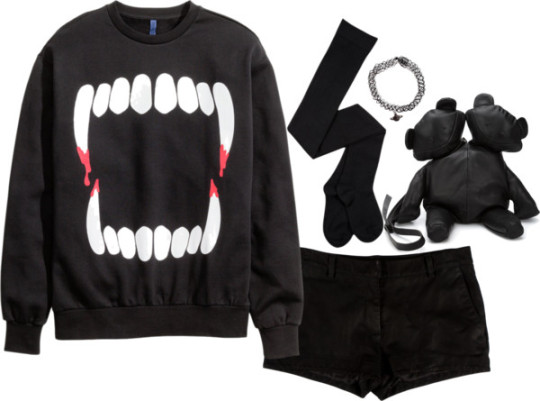
"...before you go...can you love me just a little bit more..." by lifesucks-musichelps featuring charm necklaces ❤ liked on Polyvore
H m sweatshirt / L'Agence short shorts / Socks / Area Di Barbara Bologna leather shoulder bag / Charm necklace
0 notes
Photo

Express Yourself! by polyvore-editorial featuring black high heel shoes ❤ liked on Polyvore
Area Di Barbara Bologna plaid jacket
$575 - farfetch.com
Damsel in a Dress skinny trousers
$61 - johnlewis.com
Gucci socks
gucci.com
Christian Louboutin black high heel shoes
christianlouboutin.com
Proenza Schouler leather crossbody purse
matchesfashion.com
#polyvore#Area Di Barbara Bologna#Damsel in a Dress#Gucci#Christian Louboutin#Proenza Schouler#fashion#style#clothing
0 notes
Photo
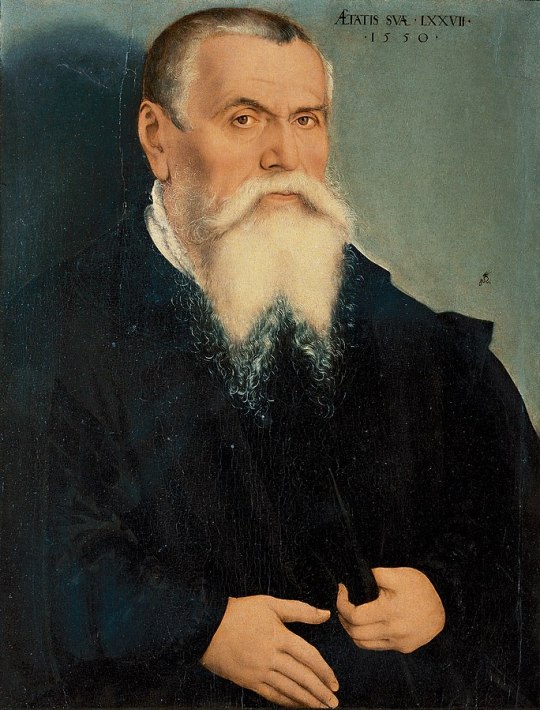
Lucas Cranach the Younger - Portrait of the artist's father, Lucas Cranach the Elder - 1550
Lucas Cranach the Younger (Lucas Cranach der Jüngere; October 4, 1515 – January 25, 1586) was a German Renaissance painter and portraitist, the son of Lucas Cranach the Elder.
Lucas Cranach the Elder (German: Lucas Cranach der Ältere German, c. 1472 – 16 October 1553) was a German Renaissance painter and printmaker in woodcut and engraving. He was court painter to the Electors of Saxony for most of his career, and is known for his portraits, both of German princes and those of the leaders of the Protestant Reformation, whose cause he embraced with enthusiasm. He was a close friend of Martin Luther. Cranach also painted religious subjects, first in the Catholic tradition, and later trying to find new ways of conveying Lutheran religious concerns in art. He continued throughout his career to paint nude subjects drawn from mythology and religion.
Cranach had a large workshop and many of his works exist in different versions; his son Lucas Cranach the Younger and others continued to create versions of his father's works for decades after his death. He has been considered the most successful German artist of his time.
He was born at Kronach in upper Franconia (now central Germany), probably in 1472. His exact date of birth is unknown. He learned the art of drawing from his father Hans Maler (his surname meaning "painter" and denoting his profession, not his ancestry, after the manner of the time and class). His mother, with surname Hübner, died in 1491. Later, the name of his birthplace was used for his surname, another custom of the times. How Cranach was trained is not known, but it was probably with local south German masters, as with his contemporary Matthias Grünewald, who worked at Bamberg and Aschaffenburg (Bamberg is the capital of the diocese in which Kronach lies). There are also suggestions that Cranach spent some time in Vienna around 1500.
From 1504 to 1520 he lived in a house on the south west corner of the marketplace in Wittenberg.
According to Gunderam (the tutor of Cranach's children), Cranach demonstrated his talents as a painter before the close of the 15th century. His work then drew the attention of Duke Frederick III, Elector of Saxony, known as Frederick the Wise, who attached Cranach to his court in 1504. The records of Wittenberg confirm Gunderam's statement to this extent: that Cranach's name appears for the first time in the public accounts on the 24 June 1504, when he drew 50 gulden for the salary of half a year, as pictor ducalis ("the duke's painter"). Cranach was to remain in the service of the Elector and his successors for the rest of his life, although he was able to undertake other work.
Cranach married Barbara Brengbier, the daughter of a burgher of Gotha and also born there; she died at Wittenberg on 26 December 1540. Cranach later owned a house at Gotha, but most likely he got to know Barbara near Wittenberg, where her family also owned a house, which later also belonged to Cranach.
The first evidence of Cranach's skill as an artist comes in a picture dated 1504. Early in his career he was active in several branches of his profession: sometimes a decorative painter, more frequently producing portraits and altarpieces, woodcuts, engravings, and designing the coins for the electorate.
Early in the days of his official employment he startled his master's courtiers by the realism with which he painted still life, game and antlers on the walls of the country palaces at Coburg and Locha; his pictures of deer and wild boar were considered striking, and the duke fostered his passion for this form of art by taking him out to the hunting field, where he sketched "his grace" running the stag, or Duke John sticking a boar.
Before 1508 he had painted several altar-pieces for the Castle Church at Wittenberg in competition with Albrecht Dürer, Hans Burgkmair and others; the duke and his brother John were portrayed in various attitudes and a number of his best woodcuts and copper-plates were published.
In 1509 Cranach went to the Netherlands, and painted the Emperor Maximilian and the boy who afterwards became Emperor Charles V. Until 1508 Cranach signed his works with his initials. In that year the elector gave him the winged snake as an emblem, or Kleinod, which superseded the initials on his pictures after that date.
Cranach was the court painter to the electors of Saxony in Wittenberg, an area in the heart of the emerging Protestant faith. His patrons were powerful supporters of Martin Luther, and Cranach used his art as a symbol of the new faith. Cranach made numerous portraits of Luther, and provided woodcut illustrations for Luther's German translation of the Bible. Somewhat later the duke conferred on him the monopoly of the sale of medicines at Wittenberg, and a printer's patent with exclusive privileges as to copyright in Bibles. Cranach's presses were used by Martin Luther. His apothecary shop was open for centuries, and was only lost by fire in 1871.
Cranach, like his patron, was friendly with the Protestant Reformers at a very early stage; yet it is difficult to fix the time of his first meeting with Martin Luther. The oldest reference to Cranach in Luther's correspondence dates from 1520. In a letter written from Worms in 1521, Luther calls him his "gossip", warmly alluding to his "Gevatterin", the artist's wife. Cranach first made an engraving of Luther in 1520, when Luther was an Augustinian friar; five years later, Luther renounced his religious vows, and Cranach was present as a witness at the betrothal festival of Luther and Katharina von Bora. He was also godfather to their first child, Johannes "Hans" Luther, born 1526. In 1530 Luther lived at the citadel of Veste Coburg under the protection of the Duke of Saxe-Coburg and his room is preserved there along with a painting of him. The Dukes became noted collectors of Cranach's work, some of which remains in the family collection at Callenberg Castle.
The death in 1525 of the Elector Frederick the Wise and Elector John's in 1532 brought no change in Cranach's position; he remained a favourite with John Frederick I, under whom he twice (1531 and 1540) filled the office of burgomaster of Wittenberg. In 1547, John Frederick was taken prisoner at the Battle of Mühlberg, and Wittenberg was besieged. As Cranach wrote from his house to the grand-master Albert, Duke of Prussia at Königsberg to tell him of John Frederick's capture, he showed his attachment by saying,
I cannot conceal from your Grace that we have been robbed of our dear prince, who from his youth upwards has been a true prince to us, but God will help him out of prison, for the Kaiser is bold enough to revive the Papacy, which God will certainly not allow.
During the siege Charles V, the Holy Roman Emperor, remembered Cranach from his childhood and summoned him to his camp at Pistritz. Cranach came, and begged on his knees for kind treatment for Elector John Frederick.
Three years afterward, when all the dignitaries of the Empire met at Augsburg to receive commands from the emperor, and Titian came at Charles's bidding to paint King Philip II of Spain, John Frederick asked Cranach to visit the city; and here for a few months he stayed in the household of the captive elector, whom he afterward accompanied home in 1552.
He died at age 81 on October 16, 1553, at Weimar, where the house in which he lived still stands in the marketplace. He was buried in the Jacobsfriedhof in Weimar.
Cranach had two sons, both artists: Hans Cranach, whose life is obscure and who died at Bologna in 1537; and Lucas Cranach the Younger, born in 1515, who died in 1586. He also had three daughters. One of them was Barbara Cranach, who died in 1569, married Christian Brück (Pontanus), and was an ancestor of Johann Wolfgang von Goethe.
His granddaughter married Polykarp Leyser the Elder, thus making him an ancestor of the Polykarp Leyser family of theologians.
19 notes
·
View notes
Photo

Bad Wolf - Stealth 1 by asgardian-queen featuring legging pants ❤ liked on Polyvore
Area Di Barbara Bologna halter neck top, 610 AUD / Rick Owens legging pants, 2 575 AUD / Sanctus 'Ornatus Bodysuit' - charcoal jersey bodysuit with harness and..., 115 AUD / Amazon.com: TITLE Boxing Black Pro Fierce Gauze (72 Rolls), Black:..., 39 AUD / Whetstone™ Pioneer Camping Hatchet Axe, 29 AUD / Converse Jack Purcell Moto Jacket Mid – grey, 91 AUD
0 notes
Photo

Dancing by hani-hanink featuring creeper shoes ❤ liked on Polyvore
Vetements sock ankle boots, 14,705 MXN / Creeper shoes, 3,260 MXN / Charlotte Russe choker jewellery, 38 MXN / Y 3 velcro hat, 1,915 MXN / Kate Spade tech accessory, 850 MXN / Area Di Barbara Bologna circle belt, 4,705 MXN
#polyvore#fashion#style#Vetements#Charlotte Russe#Y-3#Kate Spade#Area Di Barbara Bologna#clothing#ifiwereanasupemodel
0 notes
Text
Crochet Mesh Contrast Sweater
Crochet Mesh Contrast Sweater by kuropirate featuring a bolero jacket Pullover sweatershein.com Krizia bolero jacket1stdibs.com Purple skirt1stdibs.com Off-White heeled boots$1,290 – mytheresa.com Chanel leather pursemodalist.com Christian Dior white gold ring1stdibs.com Christian Dior letter necklace$360 – italist.com Christian Dior braceletvestiairecollective.com Christian Dior…
View On WordPress
#Area Di Barbara Bologna#Chanel#Christian Dior#clothing#eylure#fashion#Krizia#LunatiCK Cosmetic Labs#Off-White#polyvore#style
0 notes
Photo
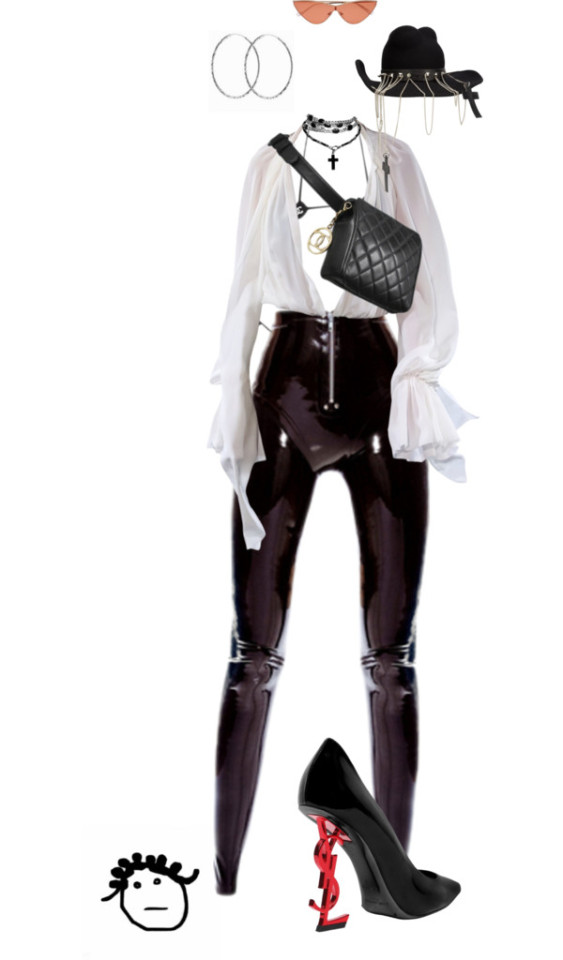
Stop by styledbyry featuring a wool hat ❤ liked on Polyvore
HOUSE OF ETIQUETTE / Yves Saint Laurent high heel pumps, $1,230 / Area Di Barbara Bologna wool hat / Le Specs sunglasses, $125
0 notes